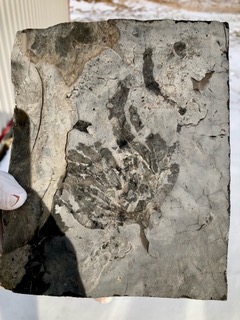5e anniversaire de Savoir média
Soirée pour souligner le cinquième anniversaire de Savoir média et pour présenter la programmation du printemps.
Fossiles d'organismes à corps mous trouvés au Québec
Christopher Cameron et Mario Cournoyer
Paleocerianthus neuvillii
famille des cérianthides, un cnidaire, cousin des coraux
Ils vivent aujourd'hui dans nos océans, mais nos fossiles sont vieux de 450 Ma, et ont ne connais pas d’intermédiaires entre nos fossiles ordoviciens et les descendant modernes!
Extrait de l'étude intitulée Morphology and paleobiology of Paleocerianthus neuvillii n. sp., an exceptionally preserved tubicolous sea anemone from the Upper Ordovician, Neuville Formation of Québec par Greta Ramírez-Guerrero, Huda Alghalid, Louis-Philippe Bateman, Jean-Bernard Caron, Mario Cournoyer et Christopher B. Cameron:
We studied exceptionally preserved fossils of the Upper Ordovician Period from the Neuville Formation in the St. Lawrence platform of Québec that are curated at the Musée de Paléontologie et de l’Évolution, Montréal. A significant aspect of this finding is that the locality and the fossil represent a new fossil deposit in the Ordovician period with Burgess Shale-type preservation. The collection is comprised of trace fossils and 22 genera, including cnidarians, bryozoans, brachiopods, mollusks, arthropods, and echinoderms. From this biota, we described an exceptionally preserved soft bodied cerianthid tubicolous sea anemone Paleocerianthus neuvillii n. sp. Fifteen slabs of limestone containing approximately 135 P. neuvillii fossil specimens were examined. P. neuvillii was a tubicolous organism and the tubes often shared a base with two or three additional tubes, one specimen clusters 15 conjoined tubes. The total length of the tubes ranged from 24.9 mm to 51.0 mm (+ 36.9 mm) with little change in their widths (~6.0 mm, N=39) demonstrating allometric growth. These lived in fine sediment associated with brachiopods, trilobites and echinoderms. Individuals appear to have been buried rapidly by a sedimentary flow. This is the oldest record of a fossil tubicolous sea anemone.
Inscription à :
Commentaires (Atom)






















































